Teams like Parallel Colony and Virtuals are driving the development of autonomous AI agents, while ARC is carving out its niche by focusing on human behavior cloning.
Written by: Teng Yan, Chain of Thought
Translated by: Jinse Finance xiaozou
Back in 2021, I was an Axie Infinity player and operated a small scholarship guild. If you didn’t experience that era, let me tell you—it was absolutely wild.
Axie Infinity made people realize that cryptocurrency and gaming could be combined. Essentially, it’s a simple Pokémon-style strategy game where players need to form a team of 3 Axies (very fierce warriors), each with unique abilities. You can lead your team to battle against others, earning SLP token rewards by participating in the game and winning.
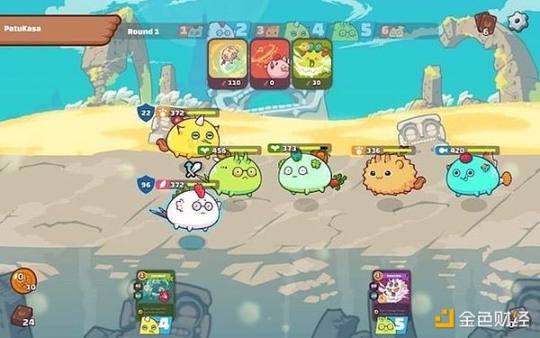
But what truly excited non-gamers was the potential to earn money through gaming. The rapid rise of Axie was due to two major mechanisms:
The first was Breeding Axies. By acquiring two Axies and using SLP tokens to breed them, voilà—a new Axie is born, combining the unique abilities of the original two Axies. Thus, rare and powerful Axies (which gamers refer to as OP Axies) became hot commodities, leading to a bustling breeding market.
The second mechanism was the scholarship program. Players from around the world began lending Axies to "scholars." These players often came from developing countries like the Philippines or Argentina, where they couldn’t afford the upfront cost of over $1,000 to buy 3 Axie NFTs. Scholars played daily to earn tokens and shared profits with the scholarship guilds, which typically took a 30-50% cut.
At its peak, especially during the pandemic in 2019, Axie had a significant impact on local economies in developing countries. In the Philippines (where about 40% of Axie Infinity users are located), many players earned far above the minimum wage. Guilds profited handsomely.
This solved a key issue for game developers: player liquidity. By incentivizing players to actively play for several hours each day, Axie ensured that every player would have an opponent waiting, making the experience more engaging.
But this came at a cost.
To address the player liquidity issue, Axie distributed a massive amount of tokens to incentivize participation. This is where the story begins. With no cap on SLP, the tokens inflated wildly, prices plummeted, and the ecosystem collapsed. As the token devalued, players left. Axie almost overnight transformed from a "play-to-earn" darling into a cautionary tale.
But what if there was a way to solve the player liquidity problem without relying on unsustainable token economics?
That’s exactly what ARC / AI Arena has been quietly working on for the past three years. Now, it’s starting to bear fruit.
1. Player Liquidity is Vital
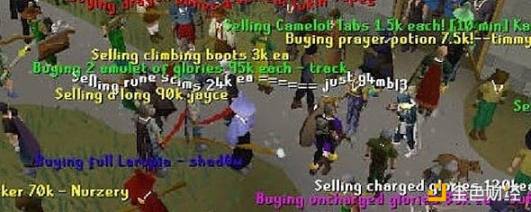
Player liquidity is the lifeblood of multiplayer games and the key to long-term success.
Many Web3 and indie games face a "cold start" problem—too few players to quickly match or form a thriving community. They lack the marketing budgets or natural IP recognition that big game studios possess. This leads to long wait times, inability to match, and high churn rates.
These games often slowly and painfully fade away.
Therefore, game developers must prioritize player liquidity from the outset. Games need various activities to maintain fun—chess requires two players, while large-scale battles need thousands. Skill matching mechanisms further raise the bar, requiring more players to keep the game fair and engaging.
The risks are even greater for Web3 games. According to Delphi Digital's annual gaming report, the user acquisition cost for Web3 games is 77% higher than that of traditional mobile games, making player retention crucial.
A strong player base ensures fair matchmaking, a vibrant game economy (i.e., more item trading), and more active social interactions, making the game more enjoyable.
2. ARC—Pioneers of AI Gaming
Developed by ArenaX Labs, ARC is leading the future of AI online gaming experiences. In short, they use AI to tackle the player liquidity issues that plague new games.
Today, most AI bots in games are simply inadequate. Once you spend a few hours mastering the tricks, these bots become very easy to defeat. They are designed to help new players but fail to provide much challenge or engagement for experienced players.
Imagine AI players whose skills rival top human players. Imagine being able to compete against them anytime, anywhere, without waiting for matchmaking. Imagine training your AI player to mimic your play style, owning it, and earning rewards based on its performance.
This is a win-win for both players and game companies.
Game companies use human-like AI bots to make their games popular, enhance player liquidity, improve user experience, and increase retention—key factors for new game entrants to survive in a competitive market.
Players gain a new way to engage with the game, developing a stronger sense of belonging through training and competing against their AI.
Let’s take a look at how they do it.
3. Products and Infrastructure
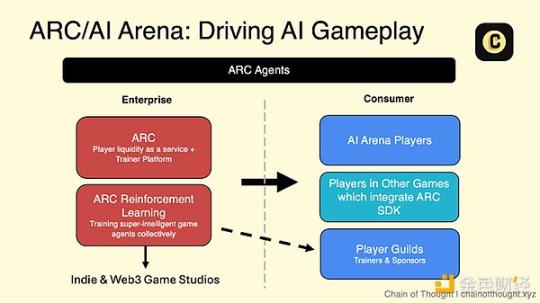
The parent company ArenaX Labs is developing a range of products to address player liquidity issues.
- Existing Product: AI Arena, an AI fighting game.
- New Product: ARC B2B, an AI-driven game SDK that can be easily integrated into any game.
- New Product: ARC Reinforcement Learning (RL)
(1) AI Arena: The Game
AI Arena is a fighting game reminiscent of Nintendo's Super Smash Bros, featuring a variety of quirky cartoon characters battling in an arena.
But in AI Arena, each character is controlled by AI—you don’t play as the fighter but as their coach. Your task is to use your strategy and expertise to train your AI fighter.
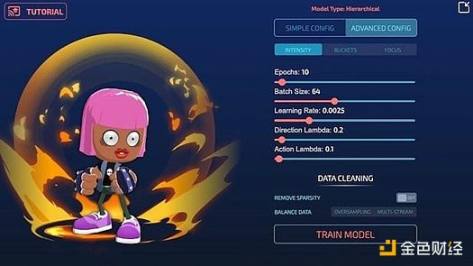
Training your fighter is like preparing a student for battle. In training mode, you enable data collection and create battle scenarios to fine-tune their actions. For example, if your fighter is close to the opponent, you can teach it to block with your shield and then follow up with a combo. How about long-range combat? Train them to launch ranged attacks.
You can control what kind of data to collect, ensuring only the best moves are recorded for training. After practice, you can refine hyperparameters for a technical edge or simply use beginner-friendly default settings. Once training is complete, your AI fighter is ready to battle.
The beginning is always the hardest—training an effective model takes time and experimentation. My first fighter fell off the platform several times, not due to being hit by an opponent. But after a few iterations, I successfully created a well-performing model. It’s incredibly satisfying to see your training pay off.
AI Arena introduces additional depth through NFT fighters. Each NFT character has unique visual traits and combat attributes that affect gameplay. This adds another layer of strategy.
Currently, AI Arena operates on the Arbitrum mainnet, and only those with AI Arena NFTs can access it, maintaining community exclusivity while refining gameplay. Players can join guilds, gather champion NFTs and NRNs for on-chain battle rankings, and earn rewards. This is designed to attract loyal players and drive competition.
Ultimately, AI Arena serves as a showcase for ARC's AI training technology. While this is their entry point into the ecosystem, the true vision extends far beyond this game itself.
(2) ARC: The Infrastructure
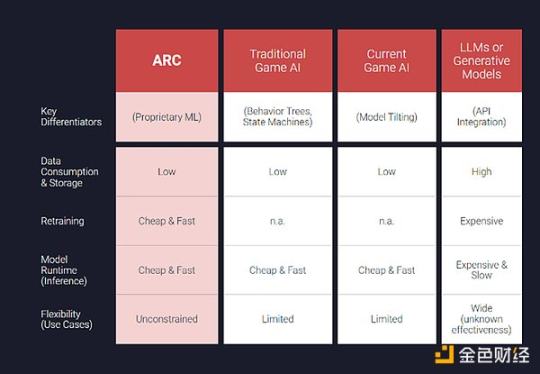
ARC is an AI infrastructure solution designed specifically for gaming.
The ArenaX team built their own game infrastructure from scratch because existing solutions like Unity and Unreal could not meet their vision.
Over the past three years, they have meticulously designed a powerful tech stack capable of handling data aggregation, model training, and model evaluation for imitation and reinforcement learning. This infrastructure is the backbone of AI Arena, but its potential is much greater.
As the team continues to refine their technology, third-party studios have begun approaching ARC, seeking licensing or white-labeling of the platform. Recognizing this demand, they formalized ARC's infrastructure into a B2B product.
Today, ARC collaborates directly with game companies to provide AI gaming experiences. Their value proposition is:
- Permanent player liquidity as a service
- AI gameplay as a simple integration
Permanent Player Liquidity as a Service
ARC focuses on human behavior cloning—training specialized AI models to mimic human behavior. This differs from the primary use of AI in today’s games, which employs generative models to create game assets and uses LLMs to drive dialogue.
With the ARC SDK, developers can create human-like AI agents and scale them according to game needs. The SDK simplifies the heavy lifting. Game companies can introduce AI without dealing with complex machine learning.
Once integrated, deploying AI models requires just one line of code, with ARC handling infrastructure, data processing, training, and backend deployment.
ARC collaborates with game companies to help them:
- Capture raw gameplay data and convert it into meaningful datasets for AI training.
- Identify key gameplay variables and decision points related to game mechanics.
- Map AI model outputs to in-game activities, ensuring smooth functionality—for example, linking the AI's "right-click" output to specific game controls.
How Does AI Work?
ARC employs four types of models for game interactions:
- Feedforward Neural Networks: Suitable for continuous environments with numerical features like speed or position.
- Table Agents: Particularly ideal for games with limited discrete scenarios.
- Hierarchical and Convolutional Neural Networks are under development.
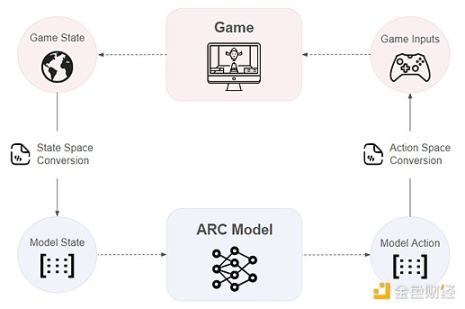
There are two interactive spaces related to ARC's AI models:
The state space defines the agent's understanding of the game at any given moment. For feedforward networks, this is a combination of input features (like player speed or position). For table agents, this is the discrete scenarios the agent may encounter in the game.
The action space describes what the agent can do in the game, ranging from discrete inputs (like pressing a button) to continuous controls (like joystick movements). This maps to game inputs.
The state space provides input for ARC's AI models, which process the input and generate output. These outputs are then transformed into game actions through the action space.
ARC works closely with game developers to identify the most critical features and design the state space accordingly. They also test various model configurations and sizes to balance intelligence and speed, ensuring smooth and engaging gameplay.
According to the team, there is particularly high demand from Web3 companies for their player liquidity services. These companies pay for better player liquidity, and ARC plans to use a significant portion of this revenue for NRN token buybacks.
Bringing AI Gameplay to Players: Trainer Platform
The ARC SDK also provides Web3 companies access to a trainer platform for their games, allowing players to train and submit agents.
Like AI Arena, players can set up simulations, gather gameplay data, and train blank AI models. These models evolve over time, incorporating new gameplay data while retaining previous knowledge, eliminating the need to start from scratch with each update.
This opens up exciting possibilities: players can sell their custom-trained AI agents on the market, creating a new layer of in-game economy. In AI Arena, skilled trainers can form guilds, offering their training skills to other companies.
For companies that fully integrate agent capabilities, the concept of Parallel Play comes to life. AI agents are available around the clock and can participate in multiple matches or game instances simultaneously. This addresses the player liquidity issue and creates new opportunities for user engagement and revenue.
But that’s not all…
(3) ARC RL: From One-on-One to Many-on-One
If AI Arena and the ARC trainer platform feel like single-player modes (where you can train your own AI models), then ARC RL resembles multiplayer mode.
Imagine this: an entire game DAO gathers its gameplay data to train a shared AI model, which everyone collectively owns and benefits from. These "master agents" represent the collective intelligence of all players, transforming esports through competition driven by collective effort and strategic collaboration.
ARC RL uses reinforcement learning (i.e., "RL") and crowdsourced human gameplay data to train these "super-intelligent" agents.
Reinforcement learning works by rewarding agents for optimal behavior. It is particularly effective in games because the reward functions are clear and objective, such as damage dealt, gold earned, or victories achieved.
This has precedent:
DeepMind's AlphaGo defeated professional human players in Go by training through millions of self-generated matches, refining its strategy with each iteration.
I hadn’t realized this before, but even before the creation of chatGPT, OpenAI was already well-known in the gaming circle.
OpenAI Five dominated top human players in Dota 2 using reinforcement learning and defeated the world champion in 2019. It mastered advanced strategies like teamwork through accelerated simulations and vast computational resources.
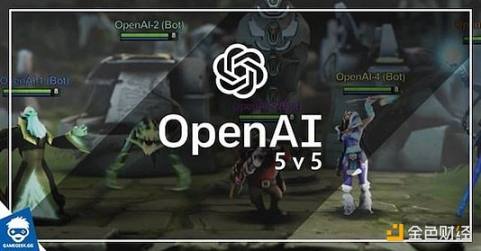
OpenAI Five ran millions of games daily, equivalent to 250 years of simulated gameplay each day, powered by 256 GPUs and 128,000 CPUs. By skipping graphical rendering, it significantly accelerated the learning process.
Initially, the AI exhibited unstable behavior, such as aimlessly wandering, but quickly improved. It mastered basic strategies like crawling in lanes and resource stealing, eventually evolving into complex maneuvers like ambushing.
The key idea of reinforcement learning is that AI agents learn how to succeed through experience rather than being directly told what to do.
ARC RL distinguishes itself by using offline reinforcement learning. AI agents learn not from their own trial and error but from the experiences of others. It’s like a student watching videos of others riding a bike, observing their successes and failures, and using that knowledge to avoid falling and improve faster.
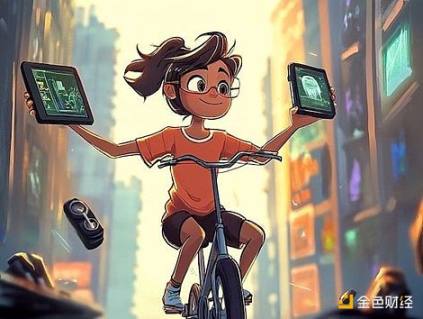
This approach offers an additional benefit: collaborative training and shared ownership of models. This not only makes powerful AI agents more accessible but also aligns the motivations of players, guilds, and developers.
In the creation of "super-intelligent" game agents, there are two key roles:
- Sponsors: Similar to guild leaders, they stake large amounts of NRN tokens to initiate and manage RL agents. Sponsors can be any entity, but are likely to be game guilds, DAOs, Web3 communities, or even popular on-chain personalized agents like Luna.
- Players: Individuals who stake small amounts of NRN tokens to contribute their gameplay data to train the agents.
Sponsors coordinate and guide their player teams, ensuring high-quality training data that gives their AI agents a competitive edge in agent competitions.
Rewards are distributed based on the performance of super agents in competitions. 70% of the rewards go to players, 10% to sponsors, and the remaining 20% to the NRN treasury. This structure creates a consistent incentive mechanism for all participants.
Data Contribution
How do you encourage players to willingly contribute their gameplay data? It’s not easy.
ARC makes providing gameplay data simple and rewarding. Players don’t need expertise; they just need to play the game. At the end of a session, they are prompted to submit data to train a specific agent. A dashboard tracks their contributions and the agents they support.
ARC’s attribution algorithm ensures quality by evaluating contributions and rewarding high-quality, impactful data.
Interestingly, even if you are a poor player (like me), your data is still valuable. Poor gameplay can help agents learn what not to do, while skilled gameplay can teach optimal strategies. Redundant data is filtered out to maintain quality.
In short, ARC RL is designed as a low-friction, mass-market product centered around co-owning agents that surpass human capabilities.
4. Market Size
ARC's technology platform is versatile, supporting various types of games such as shooters, fighting games, social casinos, racing, trading card games, and RPGs. It is tailored for games that need to maintain player engagement.
ARC's products primarily target two markets:
ARC focuses on independent developers and companies rather than established giants. Due to limited brand influence and distribution resources, these smaller companies often struggle to attract players in the early stages.
ARC's AI agents address this issue by creating a vibrant gaming environment from the outset, ensuring dynamic gameplay even in the initial phases of the game.
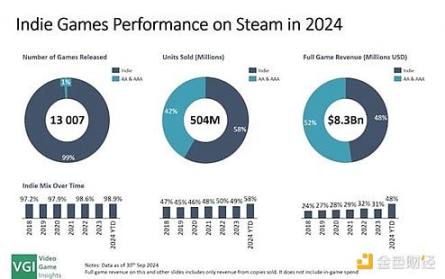
This may surprise many, but the indie game sector is indeed a major force in the gaming market:
- 99% of games on Steam are indie games.
- In 2024, indie games generated 48% of total revenue on Steam.
Another target market is Web3 games. Most Web3 games are developed by emerging companies that face unique challenges such as wallet logins, crypto skepticism, and high user acquisition costs. These games often experience player liquidity issues, which AI agents can fill, maintaining the game's appeal.
While Web3 games have recently struggled due to a lack of engaging experiences, signs of revival are emerging.
For example, one of the earliest AAA Web3 games, Off the Grid, recently achieved early mainstream success, with 9 million wallets making 100 million transactions in its first month. This paves the way for widespread success in the industry and creates opportunities for ARC to support this revival.
5. The ARC Team
The founding team behind ArenaX Labs has extensive expertise in machine learning and investment management.
CEO and CTO Brandon Da Silva led machine learning research at a Canadian investment firm, focusing on reinforcement learning, Bayesian deep learning, and model adaptability. He pioneered a $1 billion quantitative trading strategy centered on risk parity and multi-asset portfolio management.
COO Wei Xie managed a $7 billion liquidity strategy portfolio at the same firm and oversaw its innovative investment projects, focusing on emerging fields like AI, machine learning, and Web3 technology.
ArenaX Labs raised $5 million in seed funding in 2021, led by Paradigm with participation from Framework Ventures. The company secured $6 million in funding in January 2024, led by SevenX Ventures, FunPlus/Xterio, and Moore Strategic Ventures.
6. NRN Token Economics—A Healthy Reform
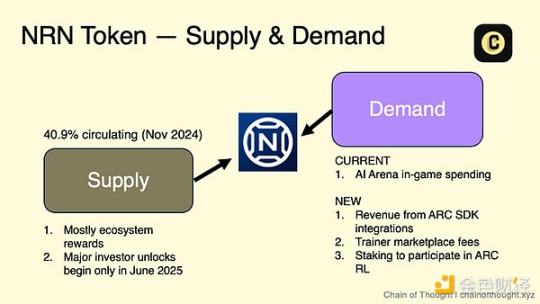
ARC/AI Arena has a token—NRN. Let's first take stock of the current situation.
Examining both the supply side and the demand side will give us a clearer understanding of the trends.
(1) Supply Side
The total supply of NRN is 1 billion, with approximately 409 million (40.9%) in circulation.
At the time of writing, the token price is $0.72, which means a market cap of $29 million and a fully diluted valuation of $71 million.
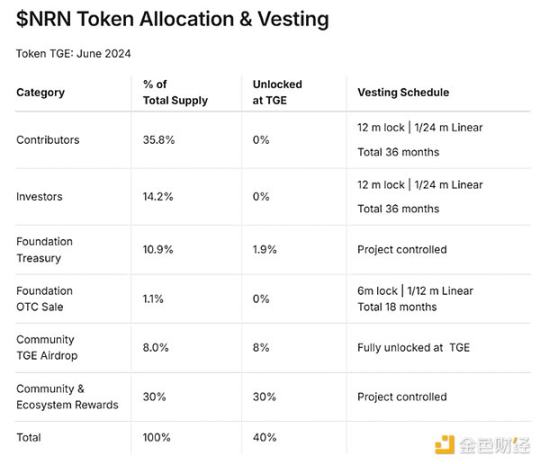
NRN was launched on June 24, 2024, with 40.9% of the circulating supply coming from:
- Community airdrops (8% of the total)
- Foundation treasury (10.9%, of which 2.9% is unlocked, with a 36-month linear unlock)
- Community ecosystem rewards (30%)
The majority of the circulating supply (30% of the 40.9%) consists of community ecosystem rewards, with the project managing these tokens and strategically allocating them for staking rewards, game rewards, ecosystem growth programs, and community-driven initiatives.
The unlock schedule is reassuring, with no major events expected in the short term:
- The next unlock is the foundation's OTC sale (1.1%), starting in December 2024, with a 12-month linear unlock. This will only increase the monthly inflation rate by 0.09%, unlikely to raise significant concerns.
- The allocation for investors and contributors (50% of the total supply) will not begin unlocking until June 2025, and even then, it will be a linear unlock over 24 months.
Currently, the sell pressure is expected to remain quite manageable, primarily stemming from ecosystem rewards. The key is trusting the team to strategically deploy these funds to drive the protocol's growth.
(2) Demand Side
NRN v1—Player Economy
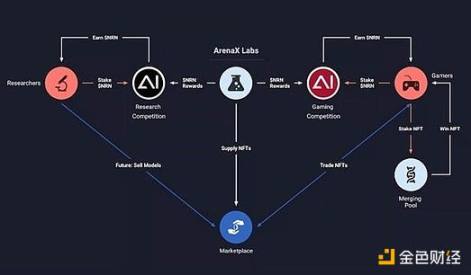
Initially, NRN was designed as a strategic resource associated with the AI Arena game economy.
Players stake NRN on AI players, earning rewards if they win and losing part of their stake if they lose. This creates a directly incentivized dynamic, transforming it into a competitive sport and providing economic incentives for skilled players.
Rewards are distributed using an ELO system, ensuring skill-based balanced payouts. Other sources of revenue include game item purchases, cosmetic upgrades, and entry fees for competitions.
The initial token model relied entirely on the success of the game and the continuous influx of new players willing to purchase NRN and NFTs to participate in the game.
Now, let’s discuss why we are so excited…
NRN v2—Player & Platform Economy
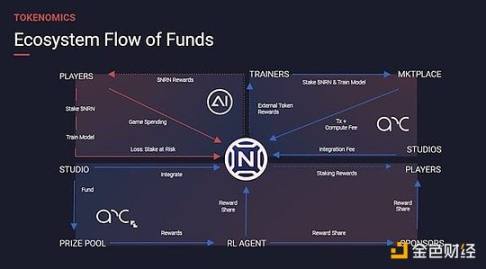
The improved v2 tokenomics of NRN introduces powerful new demand drivers by expanding the utility of the token from AI Arena to the broader ARC platform. This evolution transforms NRN from a game-specific token into a platform token. In my view, this is a very positive shift.
The three new demand drivers for NRN include:
Revenue from ARC integrations. Game companies integrating ARC will generate revenue for the treasury through integration fees and ongoing royalties tied to game performance. Treasury funds can drive NRN buybacks, grow the ecosystem, and incentivize players on the trainer platform.
Trainer market fees. NRN derives value from fees charged in the trainer arena, where players can trade AI models and gameplay data.
Staking participation in ARC RL: Both sponsors and players must stake NRN to join ARC RL. As more players enter ARC RL, the demand for NRN will correspondingly increase.
The revenue from game companies is particularly exciting. This marks a shift from a purely B2C model to a mixed B2C and B2B model, creating a sustained influx of external capital into the NRN economy. As ARC targets a broader market, this revenue stream will exceed what AI Arena itself can generate.
While the fees from the trainer market are promising, they depend on the ecosystem reaching a critical scale—enough games, trainers, and players to sustain active trading activity. This is a long-term endeavor.
In the short term, staking in ARC RL may be the most direct and reflective demand driver. A well-funded initial reward pool and the excitement of new product launches could trigger early adoption, driving up token prices and attracting participants. This creates a feedback loop of rising demand and economic growth. However, conversely, if ARC RL struggles to maintain user engagement, demand could quickly dissipate.
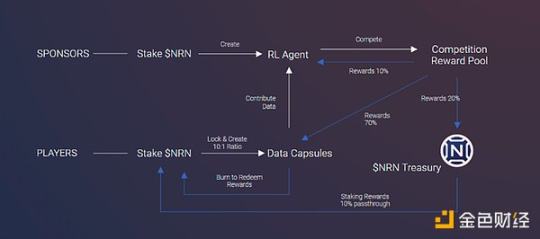
The potential for network effects is enormous: more games → more players → more games joining → more players. This virtuous cycle can position NRN as the core token in the Crypto AI gaming ecosystem.
7. The Mother of Game AI Models
What’s the conclusion? ARC's advantage lies in its ability to promote various game types. Over time, this enables them to collect a unique database of specific gameplay. As ARC integrates with more games, it can continuously feed this data back into its ecosystem, creating a virtuous cycle of growth and refinement.
Once this cross-sectional gameplay dataset reaches critical quality, it will become a highly valuable resource. Imagine using it to train general AI models for game development—unlocking new possibilities for large-scale design, testing, and optimization of games.
It’s still early days, but in an era where data is the new oil, the potential in this area is limitless.
8. Our Thoughts
(1) NRN evolves into a platform game—token repricing
With the launch of ARC and ARC RL, the project is no longer just a game company with a single product; it now positions itself as a platform and AI gaming entity. This shift should lead to a repricing of the NRN token, which was previously constrained by the success of AI Arena. The introduction of new token sources through ARC RL, combined with revenue-sharing agreements with game companies and external demand from trainer transaction fees, creates a broader and more diverse foundation for NRN's utility and value.
(2) Success is closely tied to game partners
ARC's business model links its success to the companies it collaborates with, as revenue streams are based on token allocations (in Web3 games) and payments of game royalties. The games closely tied to this are worth watching.
If ARC games achieve great success, the resulting value will flow back to NRN holders. Conversely, if partner games struggle, the flow of value will be limited.
(3) Anticipating more integrations with Web3 games
The ARC platform is well-suited for Web3 games, where competitive gameplay with incentive mechanisms perfectly aligns with existing token economics.
By integrating ARC, Web3 games can immediately enter the "AI agent" narrative. ARC RL brings the community together, incentivizing them to work towards common goals. This also opens up new opportunities for innovative mechanisms, such as making activities like "game-to-airdrop" more appealing to players. By combining AI and token incentives, ARC adds depth and excitement that traditional games cannot replicate.
(4) AI gameplay has a learning curve
AI gameplay has a steep learning curve, which may create friction for new players. I spent an hour figuring out how to properly train my players in AI Arena.
However, the player experience friction in ARC RL is lower because AI training is handled in the backend while players play the game and submit data. Another pending question is how players feel when they know their opponents are AI. Does it affect them? Does it enhance or detract from the gaming experience? Only time will tell.
9. A Bright Future
AI will unlock entirely new breakthrough experiences in the gaming world.
Teams like Parallel Colony and Virtuals are driving the development of autonomous AI agents, while ARC carves out its niche by focusing on human behavior cloning—providing an innovative approach to addressing player liquidity challenges without relying on unsustainable token economics.
The transition from a game to a mature platform is a significant leap for ARC. It not only opens up greater opportunities through partnerships with game companies but also redefines the way AI integrates with gaming.
With its improved token economics and the potential for strong network effects, ARC's bright path seems to be just beginning.
免责声明:本文章仅代表作者个人观点,不代表本平台的立场和观点。本文章仅供信息分享,不构成对任何人的任何投资建议。用户与作者之间的任何争议,与本平台无关。如网页中刊载的文章或图片涉及侵权,请提供相关的权利证明和身份证明发送邮件到support@aicoin.com,本平台相关工作人员将会进行核查。




